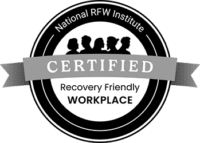Dollars and Sense: How US Health Spending Stacks Up Internationally
According to two new studies published in April of this year, it was announced that the United States spends more than $9,000 per person on healthcare, which is the most that any nation spends. This already staggering number seems even higher when compared to the lowest on the list, Somalia, which ranks at a minuscule $33 per person. Collected by the Global Burden of Disease Health Financing Collaborator Network, the data examined 184 countries and shows a story of two extremes and health spending that is all over the map – literally.
The Organization for Economic Cooperation and Development (OECD) also recently stated that the United States spends twice as much per capita as other developed countries, reporting the average spending among developed countries to be $3,620.

It’s interesting to see how the numbers compare. It’s no surprise that our spending would eclipse Somalia, which is a small third-world country, but the United States also surpasses larger, industrialized nations such as Germany and Sweden. The logical conclusion that many will draw is that spending is correlated to overall health outcomes. The more a country spends, the greater likelihood that its population is healthier – right?
More is Not Always More
Not necessarily. Despite our high spending, the U.S. does not have the best health outcomes in the world and is outranked by some of our peers who are spending far less. For example, the U.S. ranks an unimpressive 12th in life expectancy among the 12 wealthiest industrialized countries.

Within the United States, health plans and providers alike are focused on reducing costs nationwide for health services. After seeing the spending figures compared to the international community, it’s no surprise that our healthcare sector is now focused on improving outcomes while decreasing spending.
The Role of Mobile Healthcare Technology
One way that health plans and providers are increasing outcomes for patients is through the advent of mobile technology. With 52% of smartphone users gathering health-related information on their phones, tools are being created to provide health information via mobile devices. Mobile health services are predicted to be a $26 billion market globally in 2017.
With the understanding that individuals are using mobile technology to play a more active role in their own health, GoMo Health created a suite of mobile solutions for health organizations. Concierge Care® is a collection of mobile inpatient, outpatient and community education solutions developed to support the continuum of care. Through detailed health risk data collection, behavioral analysis, and intelligence gathering, Concierge Care bridges the communication gap between patients, caregivers, and providers. This has proven to be an effective way to improve patient outcomes while reducing overall spending for health plans and providers.







Find Us Online